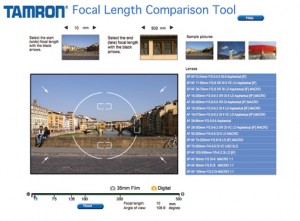
The lens market has been enlivened of late with a slew of camera-maker and “third party” lenses that have special appeal to photographers of all stripes and inclinations. We should applaud the technical achievements of companies and their optical experts who have risen to the occasion in our world of fast-changing camera technology. They have had to deal with the array of sensor megapixel counts and formats. They helped break through low-light shooting barriers with image stabilization technology. They developed lenses designed to deliver peak performance on bodies without high-pass filters and high MP sensors. And through it all, they had to maintain the delicate balance between cost and performance.
The rush of lens offerings is due in part to the varied sensor formats. It must be tough for independents to know when to make a commitment to the latest and greatest sensor format, a hesitancy and wise caution we saw when the Micro Four Thirds (MFT) format first came around. Indeed, there have been so many lenses introduced for every price level of late that the consumer needs a scorecard to make the right choice. A decision that is more complicated than when focal length, aperture range, speed, stabilization features, mount and, of course, price were the criteria.
“Recommended” Lenses
For example, the cliché “if the shoe fits, wear it” does not work in the enthusiast to high-end arena anymore. A specific mount is no longer enough to guide the buyer to choose a lens to match their specific camera sensor. Some new cameras now come with a “recommended” list of lenses that deliver the best quality for that model. Like the upgrades in computer operating systems that make certain software programs obsolete, high-end buyers might just have to upgrade their lenses when they buy the latest camera to get the best image quality it can deliver. And, for those who shoot both still and video through their ILC, the choice is more complicated.
Sensor-Size Curveball
For many buyers, there’s the sensor-size curveball. At the last photokina, the TIPA Technical Committee (Technical Image Press Association) hosted a breakfast attended by a number of camera/lens makers where we proposed options for making sense of the focal length multiplication factor conundrum. Ideas ranged from angle of view to magnification ratio as new indicators. Given that the focal length of a lens is the focal length of a lens, just how does the consumer know what the lens will deliver, given the various factors that range anywhere from 1.3x to 2x and above?
When does a 50mm actually deliver the angle of view of a 100mm? When does a supposedly superwide 14mm lens behave more like a 28mm wide? The general response was to let sleeping dogs lie. My sense was this was not from indifference or laziness, but more from a hesitancy to make things even more confusing.
There is still the challenge to offer resources that help the buyer make the right choice. When friends, family and photo enthusiasts ask what lens they should buy, I and others in the trade can no longer simply recommend a lens based on subject proclivities and body mount. Our first response is fast becoming, “What camera type do you own?” And increasingly it is, “What model camera of that type do you own?”
Cart and Horse
In my experience, camera and lens tech has taken equal turns as cart and horse; right now camera tech is clearly the horse. Some of this has to do with resolving power and issues raised by increasingly sophisticated and high MP sensors. In the distant past, some lenses out-resolved the medium (film and certainly earlier digital ILCs). But now, with the fast pace of sensor development, 4K, sensor shifting and the like, there’s a need for lenses that will deliver the goods and not compromise what these amazing cameras can deliver. And then there are the sharpening and antialiasing algorithms incorporated in numerous digital ILCs that affect results. Indeed, some of these processing steps can boost sharpness from even low-performing lenses, but you can’t fight physics and there is usually some price to pay.
I suppose it would be easiest to just qualify buyers and steer them according to their budget range. There seems to be little sense in selling a beginner a very high-end lens, given they would even consider the sticker price. However, a lens is not something a photographer tosses when they get a new camera. Lenses are what I call a “long haul” purchase, and many photographers still own (and use) lenses they bought, for example, for their old Nikon F5. And in some cases, like for owners of “older” APS-C-sensor cameras, a higher resolving lens would be overkill, right? But do they plan on stepping up their camera body later?
Buying Tools
Sigma made an initial stab at this at photokina 2012 when they introduced their Global Vision concept of lens classes according to Contemporary (value), Art (higher optical performance) and Sport (action-oriented) categories. Tamron’s website has a neat “focal length comparison tool” that can help. Indeed, each maker has a very comprehensive site that can help steer the buyer, and all differentiate lens quality and build and features using different acronyms and designators. And obviously there are clear pricing differences.

Yet, the point here is that new sensor and camera tech is going to be challenging lens makers once again. Part of the challenge will be to be quite clear about what their lenses deliver and pointing out the criteria that should be applied to making choices for specific makes and models.
Yes, there are numerous sites that potential buyers can visit, some of which do a better job than others in testing and reviews. Taking a camera with lens out in the field and shooting some event or even brick walls to check aliasing just skims the surface. I am afraid it might be coming to the point where lenses have to be tested with various and specific camera/sensor combos for buyers to know the true story about the glass they are considering. The lens and sensor are now one.

Lens Sales
On a final note, the trend in shipments and sales of interchangeable lenses follows on the trend in DSLR and mirrorless camera sales: both showed modest increases over 2014 in the summer months of this year. While nothing to write home about, any such increase, indeed any holding of its own, is good news after the bleak drops in the 2014 February-December period versus sales figures in the same span in 2013.
One might assume that interchangeable camera and lens sales would be joined at the hip and this might skew lens sales figures. After all, the logic is that new camera buyers would necessarily get a lens to go along with the body. But those stepping up to a new camera body would not necessarily be buying a news lens, so it all comes out in the wash. Overall, the lens market is and should continue to be a bright spot for the camera industry. Anything we can do to help buyers make the right choice will drive initial and aftermarket lens sales even higher.





